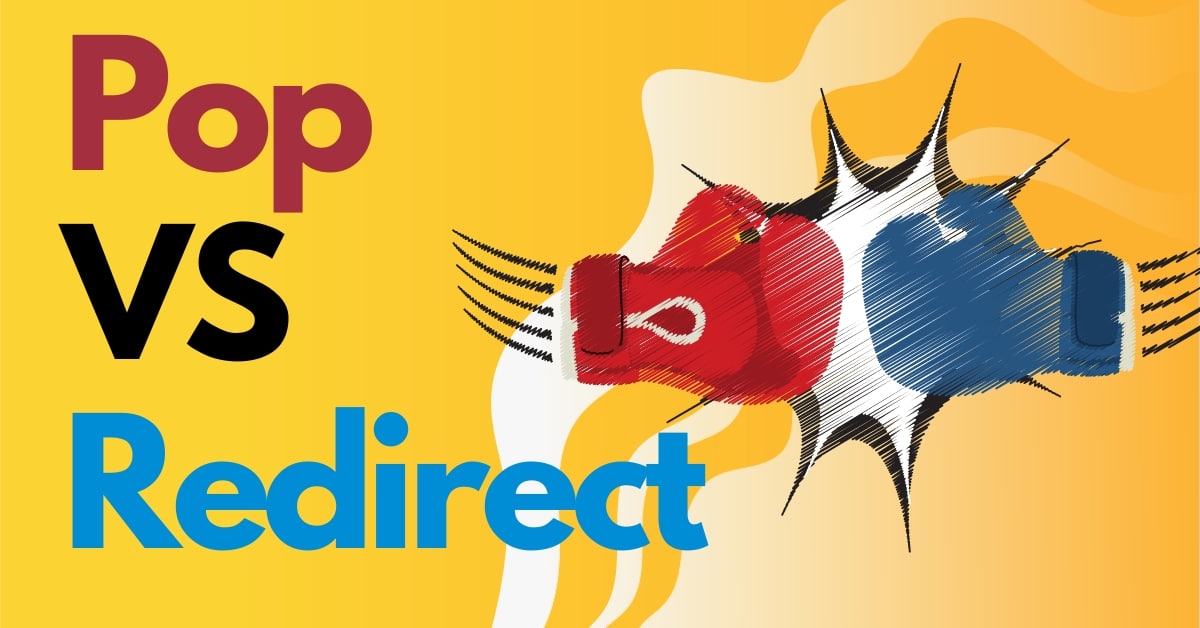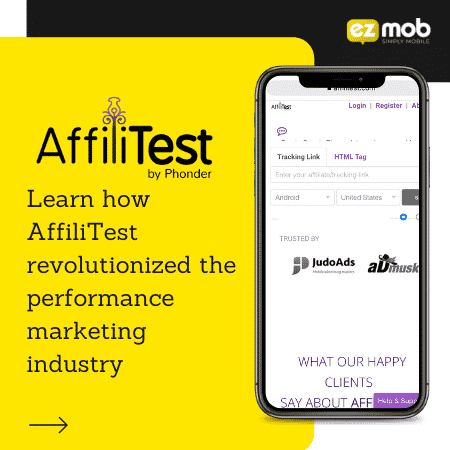
Monetizing Redirect Traffic VS Pop Traffic
Understanding the Intricacies of Pop Traffic vs. Redirect Traffic in Affiliate Marketing
In the dynamic landscape of affiliate marketing, traffic is the lifeblood that powers success for advertisers and publishers alike. But not all traffic is created equal.
One of the common questions that many industry professionals grapple with is the difference between pop traffic and redirect traffic.
While both can serve as viable options for driving user engagement, they offer distinct advantages and disadvantages that can significantly impact performance metrics like eCPM and conversion rates.
This article aims to show why pop traffic tends to outperform redirect traffic, specifically focusing on its benefits for advertisers and publishers in generating higher eCPM and ensuring quality over quantity.
Table of Contents
Defining Pop Traffic and Redirect Traffic
Pop Traffic
Pop traffic, often referred to as “pop-under” or “pop-up” traffic, is a form of online advertising where a new browser window appears either below (pop-under) or above (pop-up) the current browsing window.
This ad format is highly interactive and aims to capture the user’s attention effectively.
Pop traffic is generally triggered when a user clicks anywhere on the webpage, making it a more ‘engagement-focused’ form of advertising. The pop ads will usually display full-page creative, be it promotional content, lead forms, or even video ads, to garner immediate interaction from the user.
Redirect Traffic
On the other hand, Redirect traffic is more straightforward but less user-centric. When a user clicks on a webpage or even a URL, they are automatically ‘redirected’ to another webpage, which serves as the advertisement.
Unlike pop traffic, redirect ads don’t open in new windows but take over the entire user experience by changing the webpage the user was initially on.
This is sometimes called “zero-click” because it doesn’t require an additional click to view the ad content; the user is moved directly to it.
Comparing the Two
At first glance, both pop traffic and redirect traffic might appear to serve the same purpose—grabbing a user’s attention and directing it toward an advertisement. However, the mechanics of how they do this are fundamentally different.
Pop traffic, with its dedicated window, allows advertisers more creative freedom, enhancing the possibility of user engagement.
Redirect traffic, while easy to implement and less obtrusive, often lacks this level of engagement, primarily because the user did not actively choose to view the ad; they were led to it.
In the next sections, we’ll delve deeper into why pop traffic generally offers a more lucrative opportunity for advertisers and publishers, especially when it comes to key performance indicators like eCPM and conversion rates.
Advantages and Disadvantages of Pop Traffic: Why It Triumphs Over Redirect Traffic
Advantages of Pop Traffic
- Higher User Engagement: Pop traffic often garners more attention because it appears in a new browser window, separate from the content the user is currently viewing. This separation allows the advertiser to capture user attention more effectively.
- Better eCPM Rates: Because of the high engagement levels, advertisers are willing to pay more for pop traffic. This translates into higher eCPM (Effective Cost Per Mille) rates for publishers, making it a more lucrative option.
- Quality Over Quantity: The pop ad format, especially when implemented with JavaScript tags, provides more in-depth metrics. These metrics help advertisers ensure they are purchasing quality traffic, rather than being lumped in with remnant or less desirable network traffic as is often the case with redirect ads.
- Creative Freedom: With a whole new window at their disposal, advertisers can use various media types and ad sizes. This flexibility often leads to more innovative and eye-catching ads, increasing the likelihood of user engagement and, consequently, conversions.
- Targeting Options: Pop traffic allows for more advanced targeting, including behavioral and contextual options, making the traffic more relevant and thus increasing the potential for conversions.
- Disadvantages of Pop Traffic
User Annoyance: One of the biggest challenges with pop ads is that they can be intrusive and annoy users, especially if they are too frequent or not relevant. - Ad Blockers: As pop ads can be intrusive, they are also more likely to be blocked by ad-blocking software, potentially reducing the traffic quality and volume.
- Load Time: Depending on the media used, pop ads can sometimes be slower to load, which might result in a lesser user experience and could impact engagement rates.
Why Publishers Should Choose Pop Traffic Over Redirect Traffic
- Higher Revenue Potential: As mentioned, the eCPM rates for pop traffic are generally higher, making it a more profitable choice for publishers.
- Quality Assurance: Using JavaScript tags for pop ads allows publishers to offer better quality assurance to advertisers. This is a crucial factor for building long-term relationships and can set a publisher apart from the competition.
- User Experience: While it might seem counterintuitive given the intrusive nature of pop ads, they actually offer a better user experience compared to redirect traffic.
With pop traffic, the user can easily close the ad and return to the content they were originally viewing, unlike redirect ads that navigate away from the original content entirely.
In summary, while both pop and redirect traffic have their places in the affiliate marketing ecosystem, pop traffic often offers a more promising return on investment for both publishers and advertisers. The higher eCPM, better quality assurance, and greater potential for user engagement make it a compelling choice over redirect traffic.
Join our Newsletter
Get access to promotions, case studies, and recommended partners






